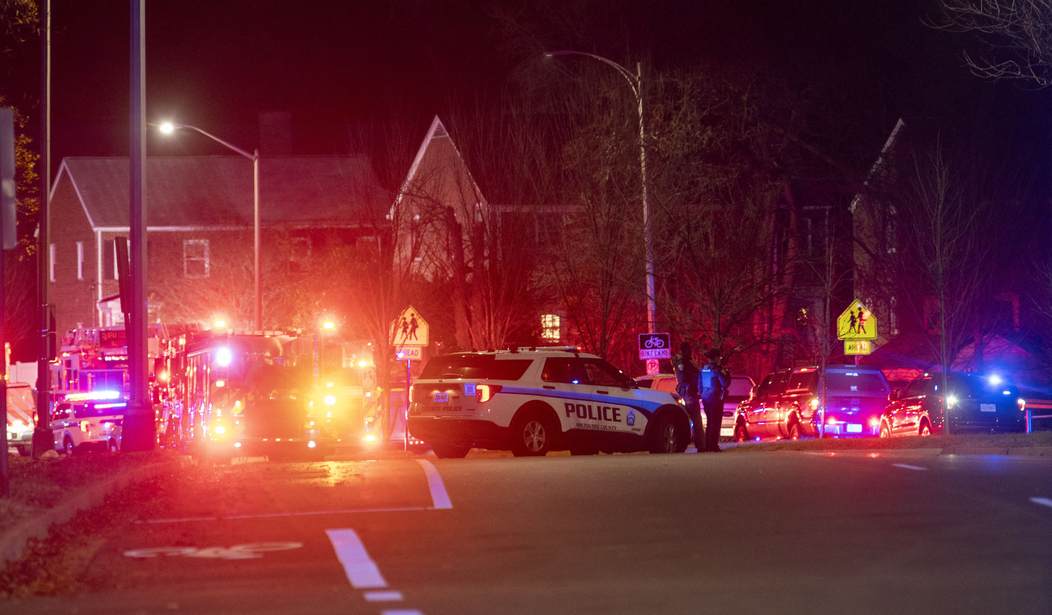When the Supreme Court struck down New York's "may issue" carry laws as a violation of the Second Amendment in 2022, many Democrats and gun control activists were quick to claim the result would be more violence.
Kamala Harris said she was "deeply troubled and concerned" about the decision and tried to tie it into the mass shooting at a Buffalo, New York grocery store, even though the perpetrator of that attack was an 18-year-old (too young under New York law to obtain a carry permit) who used a long gun in the attack.
In his own statement, Joe Biden said "lives are on the line", and called on Americans to demand "commonsense laws to make their citizens and communities safer from gun violence."
Everytown and Giffords called the decision "dangerous", while Brady proclaimed Bruen "will assuredly result in more gun violence immediately."
While the anti-gunners were adamant that Bruen would make the U.S. a more dangerous place, FBI statistics showed violent crime dropped by 1.7% in 2022, while murders plunged by nearly 6%. Now the FBI has released its crime stats for 2023, and once again, the agency is reporting that violent crime and homicides declined across the country; a 3% decline in violent crime and a 12% decrease in homicides.
Violent crime across the U.S. dipped to near pre-pandemic levels in 2022, according to the FBI’s data. It continued to tick down last year, with the rate falling from about 377 violent crimes per 100,000 people to in 2022 to about 364 per 100,000 people in 2023. That’s just slightly higher than the 2019 rate, according to Deputy Assistant Director Brian Griffith of the FBI’s Criminal Justice Information Services Division.
“Are we looking at crime rates at a return to pre-pandemic levels? I think a reasonable person would look at that and say, ‘Yes, that’s what has happened,’” Griffith said in an interview with The Associated Press.
Law enforcement agencies in the biggest municipalities in the U.S. — communities with at least 1,000,000 people — showed the biggest drop in violent crime last year — nearly 7%. Agencies in communities between 250,000 and 499,999 people reported a slight increase — 0.3%— between 2022 and 2023.
Rapes decreased more than 9% while aggravated assault decreased nearly 3%. Overall property crime decreased more than 2%, but motor vehicle theft shot up nearly 13%. The motor vehicle theft rate — nearly 319 per 100,000 people — was the highest last year since 2007.
The FBI's Uniformed Crime Report is only one of two major surveys on criminal activity, and while the National Crime Victimization Survey released earlier this year does differ in some regards from the UCR, it found that there was no statistical change in the number of victimization rates between 2022 and 2023. Dr. John Lott of the Crime Prevention Research Center is among those who take issue with the FBI's reported crime statistics, but it's important to note that while the NCVS shows a rise in self-reported violent crime between 2020 and 2024, the most recent survey shows little change between 2022 (when the Bruen decision came down) and 2023.
In other words, neither report shows any kind of spike in violent crime following the Bruen decision, even if the NCVS shows a higher rate of violent crime overall than the FBI's statistics. That shouldn't come as a surprise, of course. Concealed carry holders don't commit a lot of crime in general, and there were only a handful of states with "may issue" laws on the books when the Supreme Court struck them down in Bruen. The decision only impacted a few states like New York, New Jersey, Hawaii, Maryland, and California, but even in those states there's no evidence that the demise of "may issue" had led to an increase in violent crimes in general or in homicides specifically.
Now, this doesn't mean that Joe Biden or Kamala Harris should be given any credit for the declining crime stats reported by the FBI. The crime spike that began in the last half of 2020 was driven largely by two factors: the closure of courts and the decision by some departments to scale back arrests because of the COVID pandemic, and the riots and civil unrest that rocked the country following the death of George Floyd in Minneapolis. As the court systems have returned to some semblance of normalcy and the move to defund the police has largely sputtered out (at least outside of Democratic strongholds), the crime wave appears to have crested... or depending on what statistics you look at, largely subsided, even though there are millions more legal gun owners than there were just a few years ago.










Join the conversation as a VIP Member